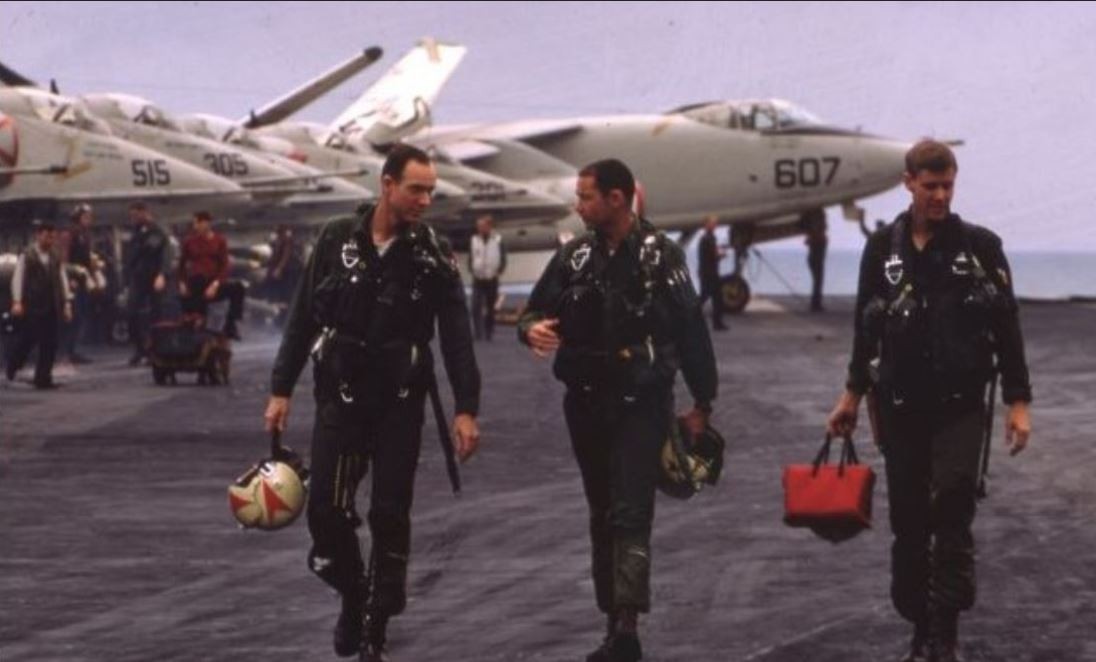- Expand navigation for Beginnings Beginnings
- Why Did the U.S. Go to War in Vietnam?
- Expand navigation for Naval Advisors in Vietnam Naval Advisors in Vietnam
- Expand navigation for Passage to Freedom Passage to Freedom
- The Seventh Fleet Arrives
- Expand navigation for The Gulf of Tonkin Incidents August 2-4, 1964 The Gulf of Tonkin Incidents August 2-4, 1964
- Voices from the War
- Expand navigation for Intelligence & Special Operations Intelligence & Special Operations
- Knowing the Enemy: Naval Intelligence During the War
- Expand navigation for The Enemy The Enemy
- Expand navigation for Intelligence by Land, Sea, and Air Intelligence by Land, Sea, and Air
- Expand navigation for SEALs SEALs
- Voices from the War
- Expand navigation for Surface Navy Surface Navy
- The War at Sea
- Expand navigation for Naval Gunfire Support Naval Gunfire Support
- Expand navigation for The Big Guns The Big Guns
- Operation Market Time
- Expand navigation for Air Defense Air Defense
- Voices from the War
- Expand navigation for Air Power Air Power
- Expand navigation for From the Waves to the Skies From the Waves to the Skies
- Expand navigation for Operation Rolling Thunder Operation Rolling Thunder
- Operation Linebacker I & II
- Expand navigation for A Navy in Flames: Carrier Fires in Vietnam A Navy in Flames: Carrier Fires in Vietnam
- Helicopter Support
- Expand navigation for The Seawolves The Seawolves
- Expand navigation for Prisoners of War Prisoners of War
- Voices from the War
- Expand navigation for Riverine Operations Riverine Operations
- Expand navigation for Brown Water Navy Brown Water Navy
- Expand navigation for Operation Game Warden: Keeping Shipping Channels Open Operation Game Warden: Keeping Shipping Channels Open
- Expand navigation for Weapons Weapons
- SEALORDS
- Expand navigation for Riverine Tactics Riverine Tactics
- Voices from the War
- Expand navigation for Logistics Logistics
- Expand navigation for Ready for Battle: Supporting the War Ready for Battle: Supporting the War
- Expand navigation for Build, Repair, Defend: The Seabees in Vietnam Build, Repair, Defend: The Seabees in Vietnam
- Expand navigation for Seaborne Supplies Seaborne Supplies
- Expand navigation for From Bullets to Beans: Underway Replenishment From Bullets to Beans: Underway Replenishment
- Expand navigation for Ministry in War Ministry in War
- Expand navigation for Saving Lives Saving Lives
- Corpsman Up!
- Expand navigation for Delivering Supplies and Troops Delivering Supplies and Troops
- Voices from the War
- Expand navigation for Conclusion Conclusion
- Expand navigation for Vietnamization Vietnamization
- Expand navigation for The War Goes On The War Goes On
- Expand navigation for Operation Homecoming Operation Homecoming
- Expand navigation for Operation Frequent Wind Operation Frequent Wind
- Expand navigation for Unrest at Sea Unrest at Sea
- Expand navigation for War's End War's End
- Voices from the War
- Expand navigation for Exhibit Publications Exhibit Publications
- Places--Foreign
- Aviation
- Equipment
- People-Places-Things--Vietnamese
- Operations
- Exhibits
- Themed Collection
- Photograph
- Historical Summary
- Vietnam Conflict 1962-1975
- Image (gif, jpg, tiff)
- Hampton Roads Naval Museum

From the Waves to the Skies
Air power was a crucial element of American strategy during the Vietnam War. U.S. pilots provided direct air support for friendly troops, attacked key supply routes such as the Ho Chi Minh Trail, and bombed North Vietnam’s infrastructure to weaken the enemy’s campaign against South Vietnam. During the course of the war, American planes dropped over twice as many bombs in Southeast Asia as they used in all of World War II. The Navy’s planes delivered 25% of American ordnance (1.5 million tons) during the war. Task Force 77, the aircraft carrier group of the U.S. Seventh Fleet, generally operated from an area off North Vietnam called “Yankee Station,” allowing for round-theclock strikes against the enemy in coordination with the U.S. Air Force and Marine Corps. These aircraft carriers provided the U.S. military with one of its most important capabilities: the projection of power ashore.
- Accessibility/Section 508 |
- Employee Login |
- FOIA |
- NHHC IG |
- Privacy |
- Webmaster |
- Navy.mil |
- Navy Recruiting |
- Careers |
- USA.gov |
- USA Jobs
- No Fear Act |
- Site Map |
- This is an official U.S. Navy web site


